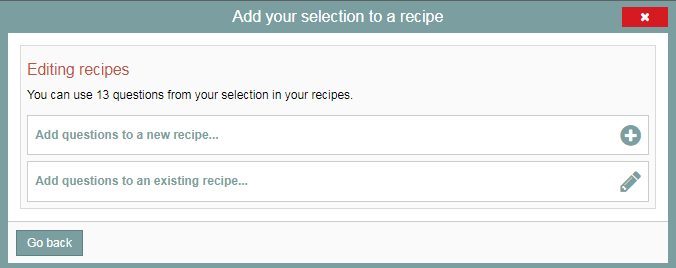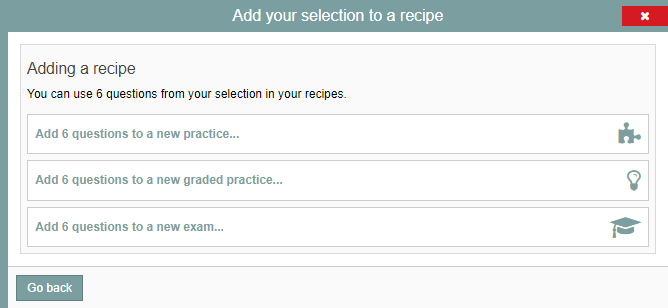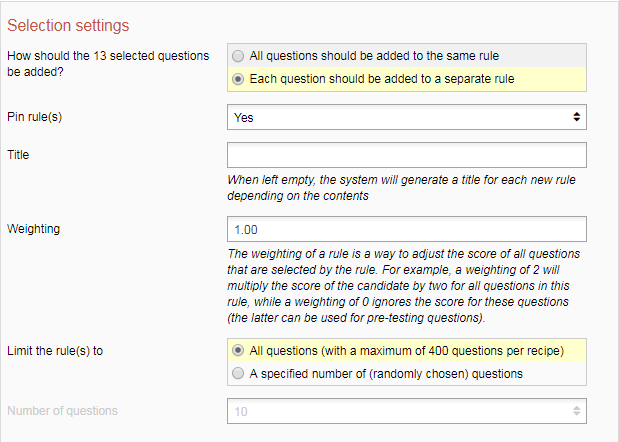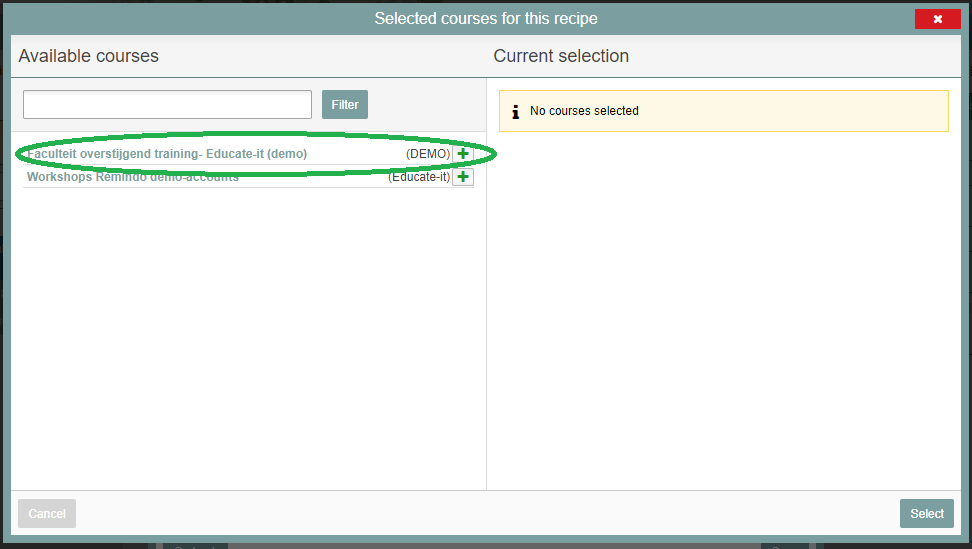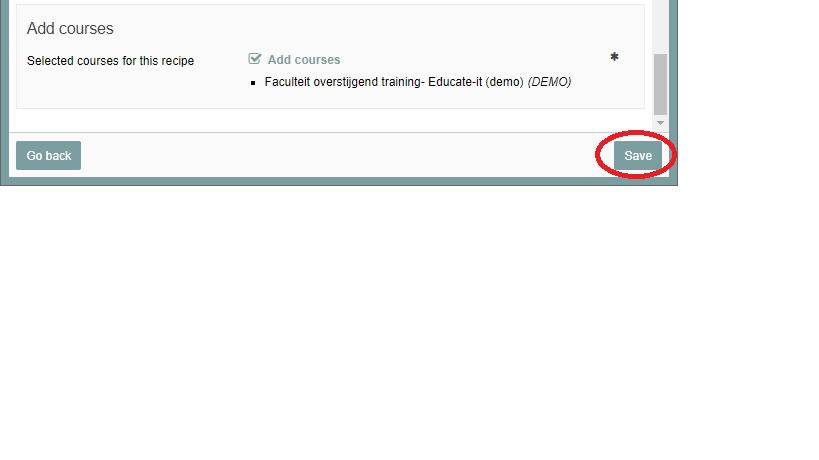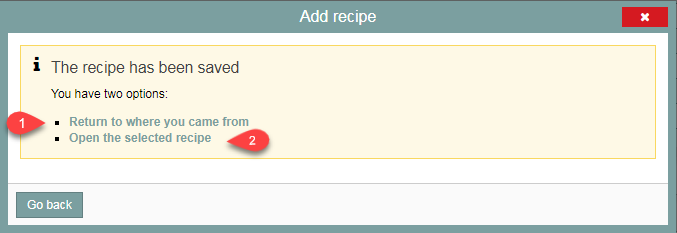Test blueprints
Blueprint: creating a blueprint by selecting questions in ‘Questions’
Good to know: The page Blueprint: creating a blueprint in ‘Tests’ describes how to create a blueprint via the main tab ‘Tests’. On this page, we explain how to create an exam from the main tab ‘Questions’. These are the two different routes to create a blueprint.
- An advantage of the route via the main tab “Questions” is that you can make a selection consisting of questions from different categories (folders of your question bank), to be placed in your test.
- Another advantage is that you can quickly create an exam with a fixed sequence of questions. The more stand-alone questions you have in your exam, the more useful this feature is.
Having selected questions in Questions, you can view the actions you can perform on that selection by clicking the lightning bolt icon in the yellow area on the left side of the screen in the item bank.
![]() The full list of available actions looks like this:
The full list of available actions looks like this:
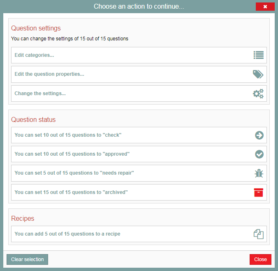
The steps that follow explain the ‘Blueprints’ action.
- Click this option (see screenshot)
- A window will pop up. See Step 1.
-
Step 1
Blueprints
A blueprint in Remindo is where you put questions that should be included in exams as well as the settings for those exams. A blueprint can only include questions that are marked ‘Approved‘ in the item bank.
Questions in your selection that are marked ‘Approved’ can be added to either an entirely new blueprint (plus icon in the screenshot) or an existing blueprint you or a colleague built earlier (pen icon).
- This page addresses the former option. Click the plus icon.
-
Please note! Some questions are only accessible for practice and graded practice on the one hand or for an exam on the other hand (see page ‘Constructing questions’, step 3) For example, questions accessible only for exams cannot be used during practice.
-
Step 2
In the window that pops up, please choose between practice, graded practice or exam.
-
Step 3
Add questions to a new blueprint
- A window full of settings will pop up.
- With the exception of the ‘Selection Settings’ and ‘Add courses’ sections, all settings on this page are described on the Blueprint: create page. You can use the information on that page to configure the General settings, Settings for exam, Retry settings, Administration settings, Visibility of result for candidates, and Delivery settings right now.
-
Please note! The Blueprint: create page describes how to create a blueprint from the Questions main tab. On this page, we are creating a blueprint from the ‘Questions’ tab. These are two completely different methods for creating a blueprint.
When adding questions to a practice, the ‘settings for exam’ are replaced with ‘settings for practice’. For more information, please look at this page.
-
Step 4
Because you are creating a blueprint through the ‘Questions’ tab, you must also configure ‘Selection settings’ (see screenshot below). The ‘Selection settings’ determine how questions will be added to blueprint rules. They also determine some of the options within those rules. This is what the ‘Selection settings’ mean:
- Select whether the selected questions should all be added to a single rule or whether a new rule should be created for each question. When you add multiple questions to a single Rule, these questions will be shuffled around within that Rule. If you want your questions to appear on the exam in a set order, put each question into its own Rule.
- Pin rule(s): Select ‘Yes’ if you want the rules to remain in the same place and be displayed in that set order during the performance of the exam. Even then, questions within a rule will still be shuffled.
- Title: This is where you assign a name to the new rule or rules. Please note that if you create multiple rules, they will all be assigned the same name.
- Weighting: This option determines how questions will be weighted. The default weight of all questions is 1.
- Limit the rule(s) to: Use this option when you have multiple questions in a rule. When you click ‘A specified number of (randomly selected) questions’, a set number of questions will be randomly picked from those available and included in each exam. Please note that each student will face a different selection of questions!
-
Step 5
- After configuring all the other settings for your new blueprint, all that remains is to indicate which Course the blueprint should be placed in.
- Click ‘Add course’.
-
Step 6
- Select the correct course (green circle) and click at the plus button right. Then click ‘Select’.
-
Step 7
- Save your blueprint settings.
-
Step 8
- Next, choose whether you want to return to the page of actions for selected questions (1) or continue to the blueprint you just created (2).


